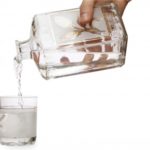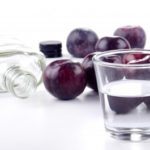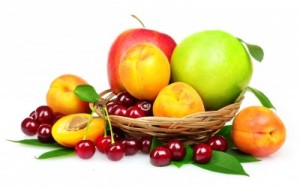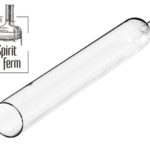Jaki destylat wybrać na nalewkę
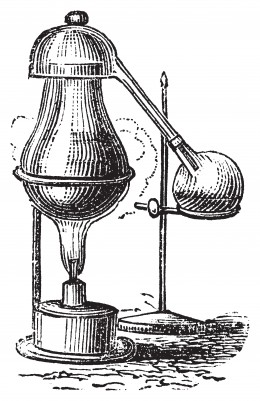
Jak już wiemy, dobry alkohol jest jednym z podstawowych składników każdej nalewki, składnikiem który może mieć ogromny wpływ na smak naszej domowej nalewki. W krajach w których destylacja domowa alkoholu jest całkowicie zgodna z obowiązującym tam prawem, można wybierać pomiędzy różnymi rodzajami destylatów: cukrówki, owocówki, zbożówki. Każdy z tych destylatów jest inny, ma inne zalety i wady. Głównymi zaletami destylatów ogólnie jest ich cena i jakość. Cena wytworzenia destylatu w domowych warunkach jest dużo niższa niż zakup spirytusu czy wódki w sklepie, a jakość często jest nieporównywalnie lepsza od produktów sklepowych.
Chciałbym tutaj też zaapelować, że: Destylat to nie to samo co Bimber! Dziwne? Otóż nie. Podróżując po świecie i spotykają różne osoby na swojej drodze (osoby mniej lub bardziej związane z wytwarzaniem alkoholu), bywając w małych rodzinnych destylarniach w Austrii, popijając regionalne destylaty w Niemczech – nauczyłem się, że słowa destylat i bimber znaczą coś innego! Bimber to produkt wykonywany w pośpiechu, nie zwracając uwagi na jakość użytych składników, często wytwarzany na aparatach niskiej jakości. Taki alkohol jest często marnej jakości, o niedobrym smaku i śmierdzącym zapachu. Destylat to produkt wytworzony z sercem. Z zachowaniem wszelkich zasad sztuki destylacyjnej, przy użyciu najwyższej jakości surowców, dobrych drożdży gorzelniczych i na wysokiej jakości aparatach destylacyjnych. Mogą to być wysokiej jakości destylaty owocowe jak również wyśmienite i delikatne w smaku wódki zbożowe, po których nie będzie bolała głowa następnego dnia.
Przygotowując destylat do nalewki, tak jak w przypadku spirytusu do nalewki, musimy uzyskać odpowiednią jego moc 60-70%. Więcej o tym pisałem w artykule: Jaki alkohol na nalewkę.
Jednym z najbardziej popularnych destylatów jest cukrówka
Cukrówka to potoczna nazwa nastawu w skład którego wchodzi woda i cukier. Cukier rozpuszcza się w odpowiedniej ilości wody a następnie dodaje się odpowiednie drożdże gorzelnicze np.: drożdże gorzelnicze COOBRA lub drożdże gorzelnicze SpiritFerm. Po odfermentowaniu takiego nastawu poddaje się go destylacji, w wyniku czego otrzymujemy czysty alkohol o mocy od 80 do nawet 95% (moc otrzymanego destylatu zależy od posiadanego aparatu destylacyjnego). Taki alkohol potocznie też nazywany jest cukrówką. Zaletą cukrówek jest ich bardzo niska cena (w dużej mierze zależna od cen cukru), duża szybkość wytwarzania średnio od 2 do 8 dni od momentu nastawienia do otrzymania alkoholu, neutralny smak.
Jednym z lepszych destylatów jest winiak
Winiak to potoczna, rodzima nazwa destylatu powstającego po oddestylowaniu nastawu owocowego. Na winiak możemy użyć każdego rodzaju owocu który nam pasuje. Należy także zaopatrzyć się w odpowiednie drożdże do owocówek. Owoce z jakich zamierzamy oddestylować winiak (destylat owocowy) powinny być dobrej jakości: dojrzałe, smaczne, aromatyczne. Owoce miażdżymy i po dodaniu syropu cukrowego fermentujemy specjalnymi drożdżami do fermentacji nastawów owocowych np.: SpiritFerm Turbo Fruit. Po zakończonej fermentacji nastaw destylujemy w wyniku czego otrzymujemy aromatyczny alkohol. Najbardziej znane na świecie alkohole uzyskane w ten sposób to:
- Calvados – destylat z jabłek
- Śliwowice – destylaty uzyskane ze śliwek
- Brandy, Grappa, Koniak, Metaxa – to destylaty uzyskane z winogron lub wytłoków winogronowych po fermentacji wina
Zaletą tych destylatów jest wyborny smak, który znakomicie wpłynie na kompozycję nalewki, doskonale ją uzupełni dodając np.: destylat śliwkowy do nalewki śliwkowej lub destylat wiśniowy do nalewki wiśniowej. Trzeba się jednak zastanowić, czy otrzymany destylat nie jest wart tego by go zachować, poddać starzeniu na płatkach dębowych i otrzymać wspaniały winiak (polski domowy koniak).
Gatunkowe wódki zbożowe
Destylaty zbożowe to produkty otrzymane w wyniku oddestylowania zacierów zbożowych. Odpowiednio przygotowane zboża, słody lub inne produkty skrobiowe (kukurydza, kartofle, ryż, etc..), poddaje się zacieraniu czyli procesowi przekształcenia niefermentowanej skrobi do dobrze fermentujących cukrów prostych. Następnie po dodaniu odpowiednich gatunków drożdży gorzelniczych do zacierów następuje fermentacja. W ten sposób otrzymuje się wódkę zbożową, która często jest dużo lepsza od niejednej wódki na półce sklepowej. W przypadku gatunkowych i smacznych destylatów zbożowych, których wytworzenie jest czasochłonne i pracochłonne, także należy zastanowić się czy nie warto jest je zachować i degustować po okresie leżakowania.
Ten artykuł znaleziono w wyszukiwarce Google m.in. poprzez poniższe frazy kluczowe:
- alkohol na nalewki
- jaki spirytus do nalewki
- nalewka lipiec
- jakie drożdże do nastawów owocowych
- nalewki z wytłoków owocowych
- nastaw na spirytus
- winiak domowy
